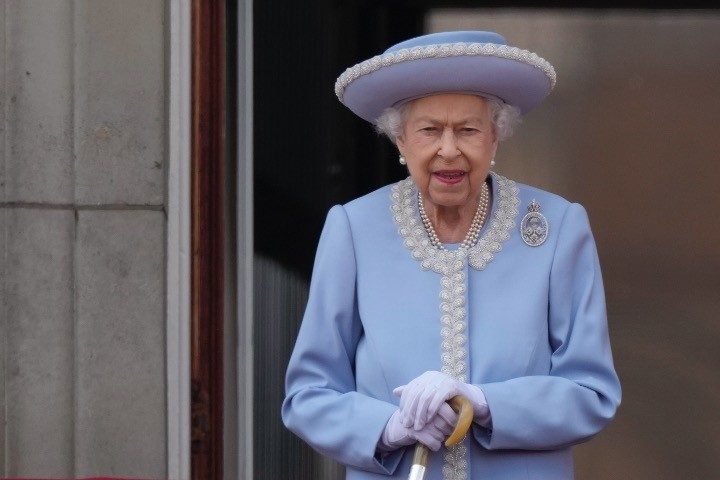
Buckingham Palace has announced that Queen Elizabeth II died today at Balmoral Castle in Scotland. The United Kingdom’s longest-reigning monarch was 96 years old; she began her 70-year reign in 1952 upon the death of her father, King George VI.
Earlier in the day, royal doctors had announced that they were “concerned for Her Majesty’s health.”
“The Queen died peacefully at Balmoral this afternoon,” said a statement from Buckingham Palace.
The queen’s eldest son, Charles, who will take over the queen’s duties as the new king, was at Balmoral with the majority of Queen Elizabeth’s family. Her grandson Prince Harry, who lives in California, is said to be on his way.
“The King and the Queen Consort will remain at Balmoral this evening and will return to London tomorrow,” the palace announced.
In a statement, the new king said:
The death of my beloved Mother, Her Majesty The Queen, is a moment of the greatest sadness for me and all members of my family.
We mourn profoundly the passing of a cherished Sovereign and a much-loved Mother. I know her loss will be deeply felt throughout the country, the Realms and the Commonwealth, and by countless people around the world.
Charles’ coronation has yet to be scheduled, and will likely occur some months from now.
Queen Elizabeth’s reign, though largely ceremonial, spanned 70 years and 15 prime ministers — from Winston Churchill to Liz Truss, who took the post only two days ago. Elizabeth’s time as monarch included many historic events in British history, including the austerity of the post-World War II years, the Cold War, the United Kingdom’s transition from empire to commonwealth, and its entry into and withdrawal from the European Union.
The queen met weekly with all of her prime ministers.
Born Elizabeth Alexandra Mary Windsor in 1926, few would have believed that Elizabeth — known among her family as “Lilibet” — would have ascended to the throne.
But her uncle, King Edward VIII, abdicated in 1936 so that he could marry the twice-divorced American woman Wallis Simpson, which thrust Elizabeth’s father, George VI, onto the throne. So, at age 10, Elizabeth became heir to the throne, just three years prior to the beginning of World War II.
At 18, while still a princess, Elizabeth joined the Auxiliary Territorial Service (ATS), which was, in effect, the women’s branch of the U.K.’s military during World War II. There, she learned basic motor-mechanic and driving skills.
Upon the end of the war in 1945, then-Princess Elizabeth joined with her ATS colleagues to celebrate the end of the war in Trafalgar Square, where her parents, the king and queen, were scheduled to make an appearance.
“I remember we were terrified of being recognized so I pulled my uniform cap well down over my eyes,” the queen told the BBC in 1985.
Elizabeth described “lines of unknown people linking arms and walking down Whitehall, and all of us were swept along by tides of happiness and relief.” She added, “I think it was one of the most memorable nights of my life.”
Princess Elizabeth married her third cousin Philip, a prince of Greece who served in the Royal Navy, in 1947. Philip passed away last year, at the age of 99. The queen often referred to her husband as “my strength and stay” throughout their 74 years of marriage.
Philip and the queen had four children: Charles, the new king, who was born in 1948; Princess Anne, born in 1950; Prince Andrew, born in 1960; and Prince Edward, born in 1964. The royal progeny gave the queen eight grandchildren and twelve great-grandchildren.
Prince Andrew in particular has caused some consternation for the royal family, as he has been implicated in the Jeffrey Epstein scandal.
Queen Elizabeth’s reign marked a time of transition in the monarchy — from a time when the monarchy was almost worshiped to a time that, while still highly regarded among the population, it was not viewed with the same reverence by the citizens of the Commonwealth. At no time was this more evident as when the queen hesitated to speak after the death of Prince Charles’ first wife, Diana, in 1997.
Queen Elizabeth celebrated her Platinum Jubilee, signifying her 70th year on the throne, earlier this year.




